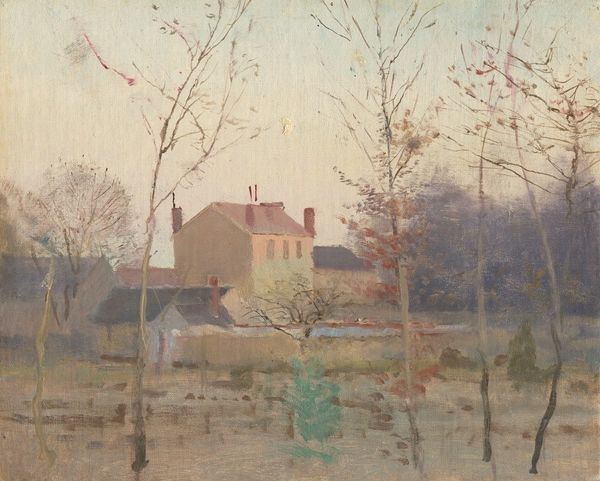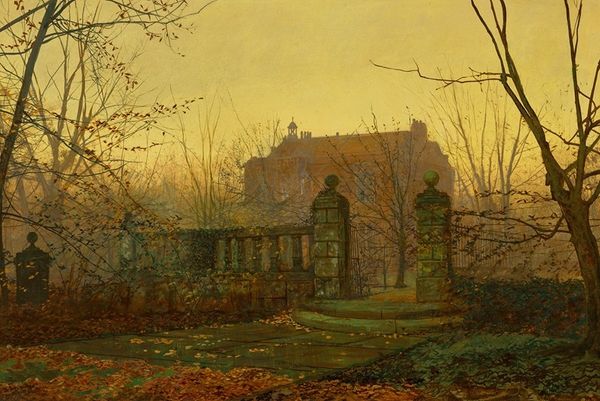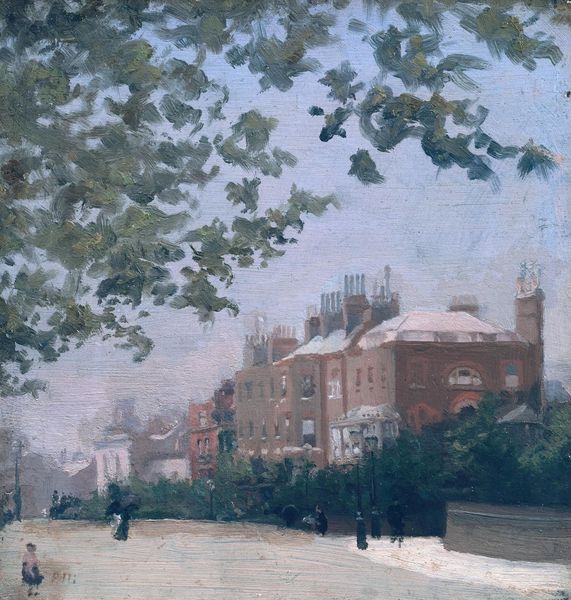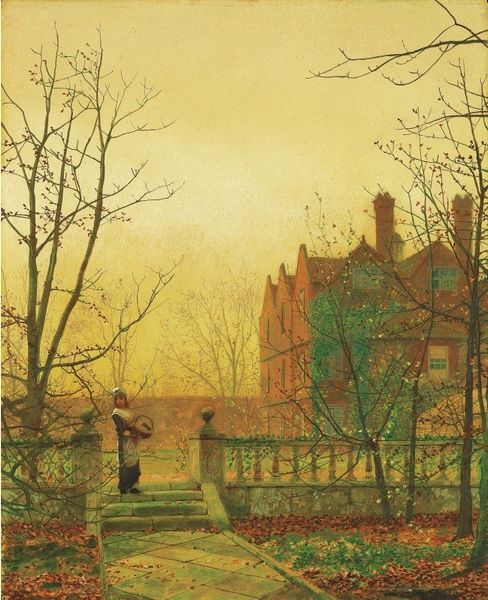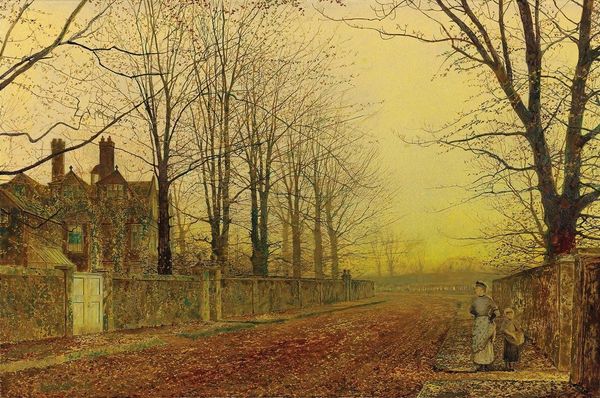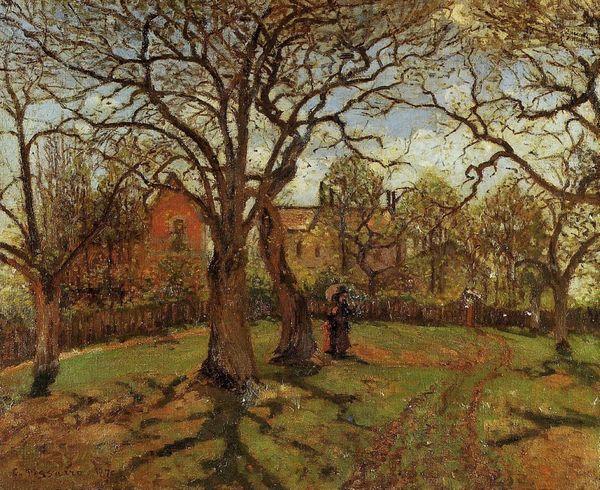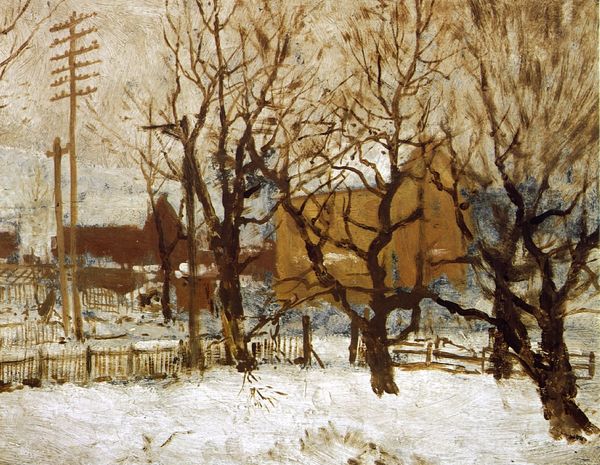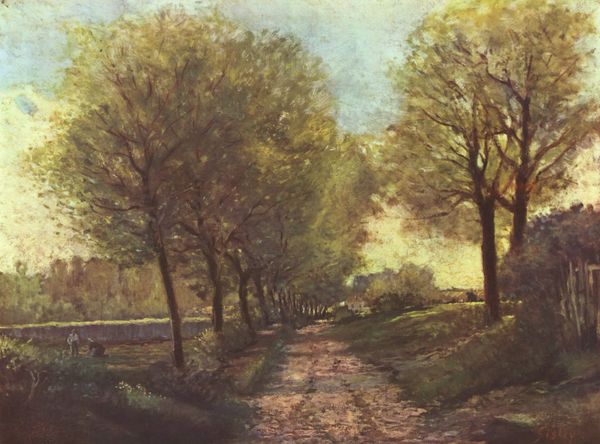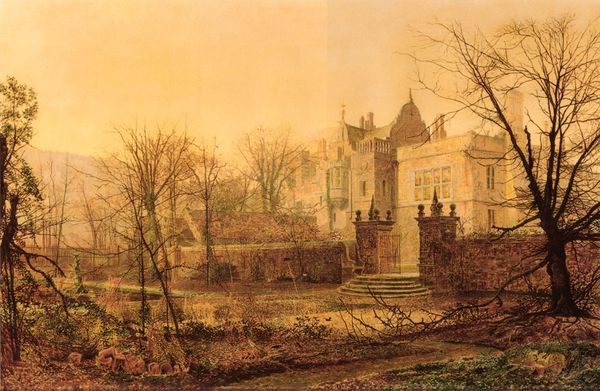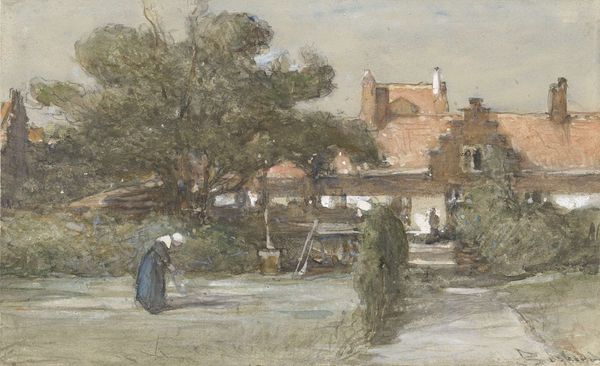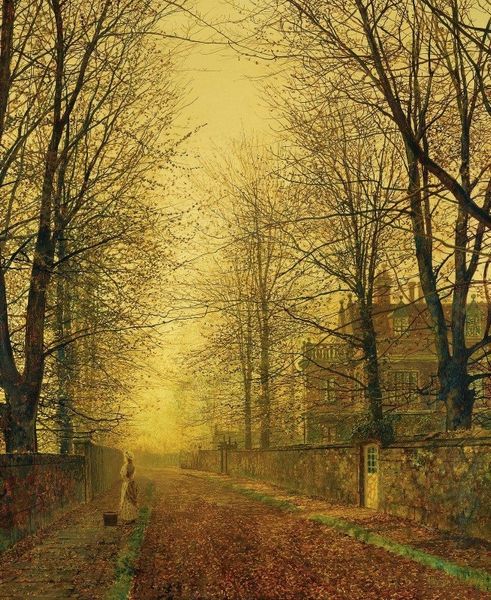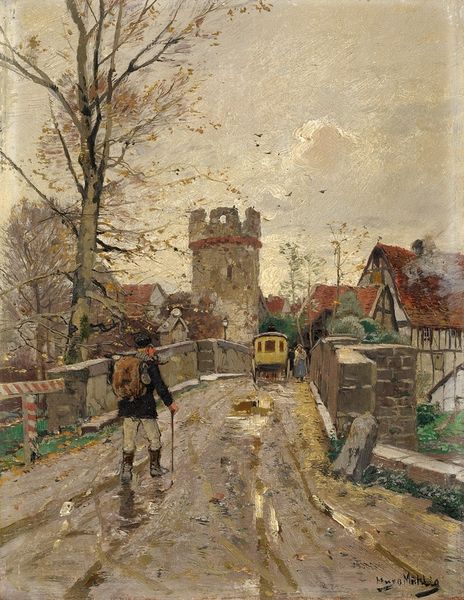
Dimensions: support: 860 x 1110 mm
Copyright: © Tate | CC-BY-NC-ND 4.0 DEED, Photo: Tate
Curator: Carel Weight's painting, "The Rendezvous," now held in the Tate Collections, depicts a meeting within a park landscape. Editor: My first impression is one of muted unease, created through the broken, almost skeletal, line work and restricted palette. Curator: Indeed. Weight often infused his scenes with an undercurrent of anxiety. Note the clock tower; such public time markers are potent symbols of fleeting youth. Editor: The composition feels disjointed. The eye struggles to find a resting point, and the perspective seems deliberately skewed, enhancing that feeling of unrest. Curator: The figures, too, are archetypes rather than individuals, mirroring the shared human experience of longing and the bittersweet passage of time. Editor: The brushstrokes themselves are quite expressive. They seem to vibrate and dissolve forms, mirroring the ephemeral nature of connections. Curator: I think we can agree that "The Rendezvous" is more than a simple depiction of a meeting; it's an exploration of human emotion. Editor: Yes, Weight's artistic language really makes the viewer reflect on the fragility and transience inherent in all relationships.
Comments
Join the conversation
Join millions of artists and users on Artera today and experience the ultimate creative platform.
tate 7 months ago
⋮
'The Rendezvous' was painted in February from drawings made in the grounds of Holland Park. One aspect of the park that attracted Weight was the Victorian architecture which reminded him of cemeteries. The work is set at dusk which is the artist's favourite time of day. Weight has stated that: 'Even when I paint a landscape out of doors, and I say I'm not going to put any figures in; when I get back to the studio I always paint in figures; it would be too lonely without people'. The atmospheric setting, and the implicit ambiguity of the central action in 'The Rendezvous', are characteristic features of all Weight's work. Gallery label, September 2004
